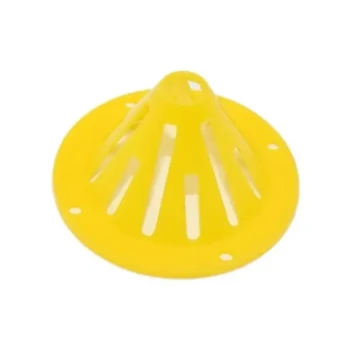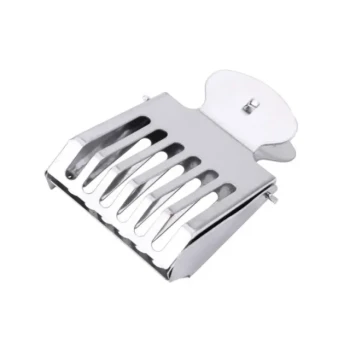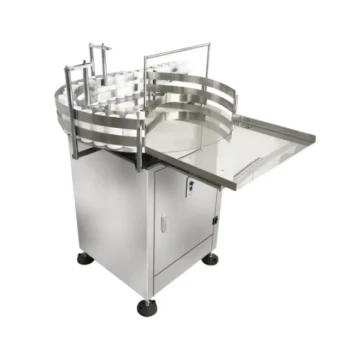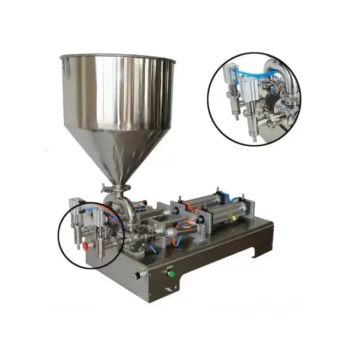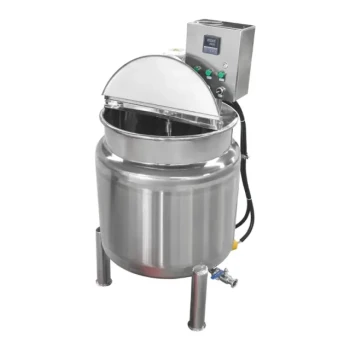The best method for feeding bees is not a single technique, but rather a strategy chosen to match your specific goal and the colony's current needs. The right approach involves selecting the correct feeder type, using the proper sugar-to-water ratio for the season, and understanding when feeding is actually necessary.
The most effective feeding strategy is situational. It requires the beekeeper to diagnose the colony's need—such as spring buildup, winter preparation, or emergency support—and then deploy the specific feeder and syrup concentration best suited for that task.
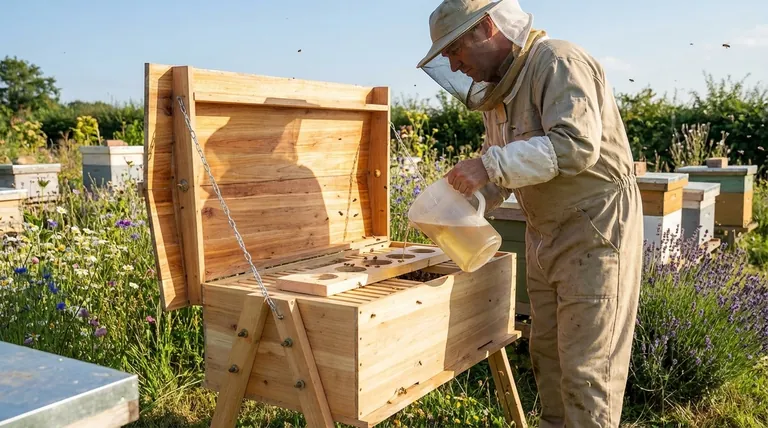
First, Determine Your Goal: Why Are You Feeding?
Before choosing a feeder or mixing syrup, you must clarify your objective. The reason for feeding dictates the entire approach.
Establishing a New Colony
When you install a new package of bees, they have no stored food, no honeycomb, and no resources. Feeding is absolutely essential to help them draw out comb and establish the colony.
Stimulating Growth in Spring
A 1:1 sugar-water syrup in early spring mimics a natural nectar flow. This encourages the queen to begin laying eggs and helps the colony build its population ahead of the main season.
Preparing for Winter
In the fall, a thicker syrup helps bees quickly accumulate the carbohydrate stores they need to survive the winter months. This is about stockpiling, not just consumption.
Preventing Starvation
During a "nectar dearth"—a period when no flowers are blooming—colonies can run out of food. Emergency feeding can prevent the entire colony from starving.
Choosing Your Feeder Type (The "How")
Feeders are broadly categorized as internal (closed) or external (open). Having more than one type on hand provides crucial flexibility to adapt to changing conditions.
Internal (Closed) Feeders: Control and Protection
These feeders are placed inside or attached directly to the hive, protecting the syrup from robbers and pests.
- Hive-Top Feeders: These sit on top of the uppermost hive box, often under the outer cover. They hold a large volume of syrup and minimize disturbance to the bees.
- Frame Feeders (Division Board Feeders): These are thin containers that take the place of one or two frames inside the hive box. They place the food source directly alongside the brood.
- Entrance Feeders: These small jars or containers attach to the hive entrance. They are easy to monitor and refill but have a very small capacity and can sometimes encourage robbing.
- Pail Feeders: This is a type of top feeder where a pail with tiny holes in the lid is inverted over the inner cover's hole, using vacuum pressure to dispense syrup slowly.
External (Open) Feeders: Community and Convenience
Open feeding involves placing a large, shared container of syrup at a distance from the hives, such as in a bucket or birdbath with structures for the bees to land on. This allows you to feed multiple colonies at once with minimal effort.
Understanding the Trade-offs
No single method is perfect. Being an effective beekeeper means understanding the risks and benefits of each choice.
The Dangers of Open Feeding
While convenient, open feeding is risky. It can attract pests like wasps and ants, as well as bees from other apiaries, potentially spreading diseases. Most importantly, it can trigger robbing, a frenzy where stronger colonies attack and steal resources from weaker ones.
The Limitations of Internal Feeders
Internal feeders require you to open the hive for refills, which can disturb the colony. Some designs, if not set up properly, can tragically lead to bees drowning in the syrup. Smaller feeders, like entrance feeders, require constant refilling.
The Critical Mistake: Feeding at the Wrong Time
You should avoid feeding during a strong natural nectar flow. Feeding at this time is unnecessary and risks adulterating your honey harvest with sugar syrup, which is unethical and diminishes the quality of your product.
Preparing the Feed (The "What")
The syrup recipe is just as important as the feeder. The concentration signals different things to the bees.
The 1:1 Ratio for Stimulation (Spring/Summer)
This mixture is one part sugar to one part water by weight or volume. It closely resembles natural flower nectar and encourages bees to draw comb and raise brood.
The 2:1 Ratio for Winter Stores (Fall)
This thicker mixture is two parts sugar to one part water. It is less work for the bees to dehydrate and store, making it ideal for quickly building up food reserves for winter.
A Note on Additives
Some beekeepers add supplements like protein powder to their syrup. This can help boost colony health, especially if their natural pollen resources are limited, but it is not a universal requirement for basic feeding.
Making the Right Choice for Your Goal
Select your feeding strategy based on a clear and specific objective for your colony's health.
- If your primary focus is establishing a new package or nucleus colony: Use a protected internal feeder (like a frame or top feeder) with a 1:1 syrup to provide a consistent, safe food source for comb building.
- If your primary focus is preparing a colony for winter: Use a large-capacity hive-top or pail feeder with a 2:1 syrup to allow bees to rapidly build winter stores with minimal disturbance from you.
- If your primary focus is preventing starvation during a dearth: Use a small, slow internal feeder (like a frame or entrance feeder) with a 1:1 syrup to provide emergency support without inciting robbing.
By matching your method to your mission, you transform feeding from a simple chore into a powerful tool for hive management.
Summary Table:
| Goal | Recommended Feeder Type | Syrup Ratio (Sugar:Water) | Key Consideration |
|---|---|---|---|
| Establish New Colony | Internal (Frame, Hive-Top) | 1:1 | Safe, consistent food for comb building |
| Spring Stimulation | Internal (Frame, Hive-Top) | 1:1 | Mimics nectar flow to boost brood production |
| Winter Preparation | Internal (Hive-Top, Pail) | 2:1 | Builds carbohydrate stores efficiently |
| Emergency Feeding | Small Internal (Entrance, Frame) | 1:1 | Prevents starvation without inciting robbing |
Equip Your Apiary with the Right Feeding Solutions from HONESTBEE
Feeding is a critical skill for hive health, and having the right equipment is essential. HONESTBEE supplies commercial apiaries and beekeeping equipment distributors with the durable, high-capacity feeders needed to implement these strategies effectively. From reliable hive-top feeders for winter prep to secure frame feeders for new colonies, our wholesale-focused operations ensure you get the quality equipment your beekeeping operation depends on.
Let's discuss your specific needs. Contact our team today to find the perfect feeding solutions for your goals.
Visual Guide
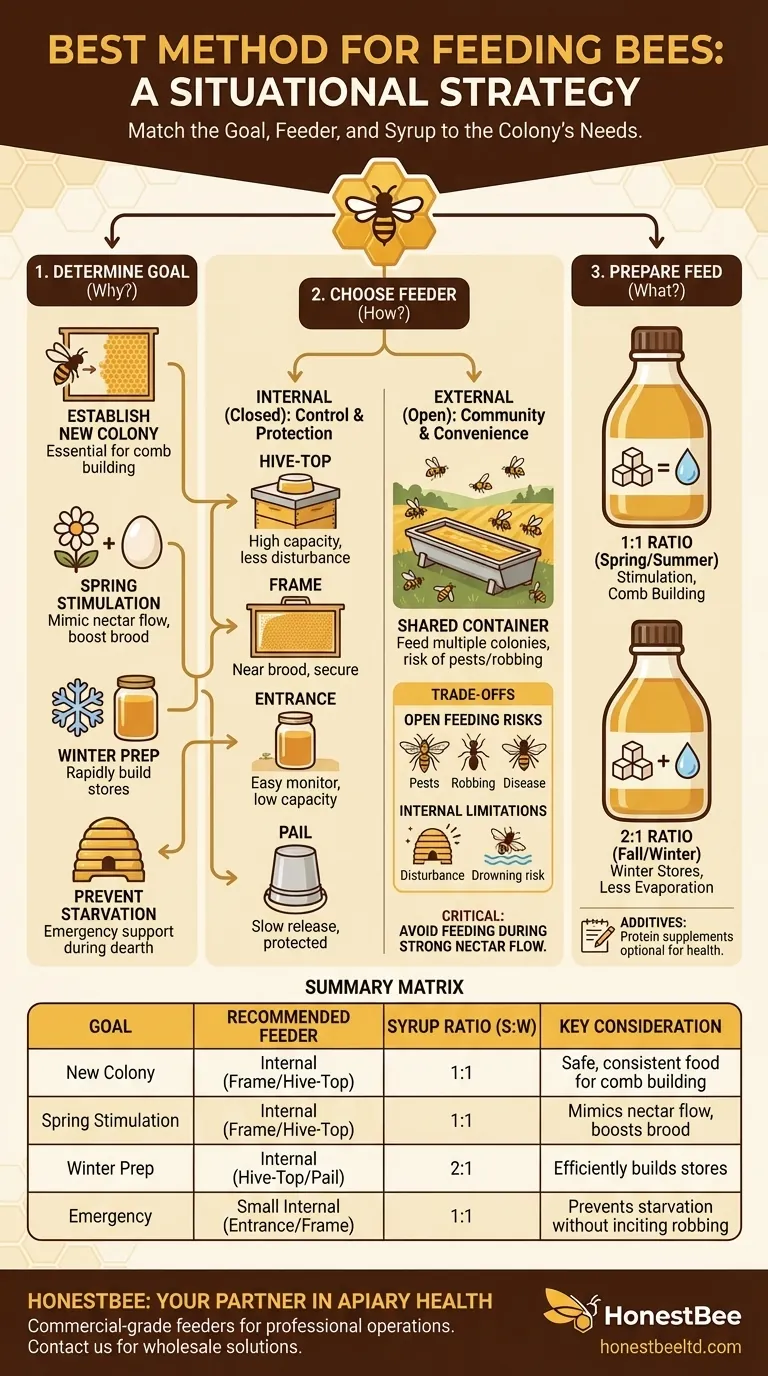
Related Products
- Long Langstroth Style Horizontal Top Bar Hive for Wholesale
- Slatted Porter Style Bee Escape for Rapid Hive Clearing
- Economy Small Scale Honey Dryer Dehumidifier Thickening Machine
- Heavy Duty Stainless Steel Queen Bee Catcher Clip
- Plastic Chinese Queen Grafting Tool for Bee Queen Rearing
People Also Ask
- What is a top bar bee hive? A Natural, Low-Stress Beekeeping Solution
- What are the benefits of the top bar hive? A Guide to Ergonomic, Natural Beekeeping
- What are the main differences between Langstroth hives and top bar hives? Choose the Right Hive for Your Beekeeping Goals
- How does the top bar hive help control varroa mites? A Natural Approach to Mite Management
- What are the benefits of a top bar hive? A Natural, Low-Impact Approach to Beekeeping

